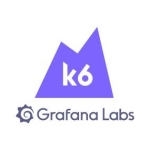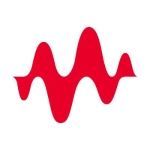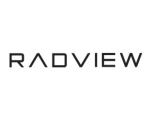What is our primary use case?
One of our use cases, it was Oracle E-Business Suite (Oracle EBS) application testing. The other one was a migration project for SAP HANA. In those two use cases, we needed to perform benchmarking and increase the coverage from an end-to-end point of view rather than just focusing on the API endpoints.
We had to automate some of the Oracle form-specific transactions using NeoLoad, as we wanted to expand the coverage. So, I used NeoLoad as a hybrid solution alongside JMeter. Initially, the majority of the volume was on JMeter, but for the Oracle forms usage, which was low, we utilized a low-volume license from NeoLoad.
What is most valuable?
NeoLoad is actually really good, mainly because they have a world-class support service.
What needs improvement?
NeoLoad can improve the correlation templates, which are specific to frameworks. There's room for improvement in that area.
In future releases, I think they definitely need a full UI revamp because I believe it's built on Java technology, which feels a bit outdated. I would like to see that being improved. Additionally, increasing the coverage of the correlation templates capabilities would be very useful.
For how long have I used the solution?
I've used it across around three projects mainly because we provide the best options for our clients. We combine open-source tools with commercial ones. So, in two cases, we encountered limitations with JMeter, mainly because it doesn't offer off-the-shelf support for Oracle forms and SAP GUI. That's when we decided to introduce NeoLoad.
What do I think about the stability of the solution?
It is a stable solution. When I worked with this tool, the main pain point was finding solutions. They have some good documentation, but it could be improved because sometimes the feature I was looking for was already there, but it took me a while to find it due to the documentation.
So, NeoLoad can improve the documentation. Otherwise, the tool itself is stable. For our purposes, using it with around 100 users, it was very stable.
What do I think about the scalability of the solution?
It is a scalable solution. I have integrated NeoLoad three times in your personal projects. I would say the main feature that might lag for enterprise usage is the capability to manage scripts in a team environment. You should be able to maintain scripts across multiple users through a source code repository. I'm not sure whether NeoLoad fully supports managing Java programming-like stuff with ease through a source code repository. That might be one aspect that could make it more qualified for enterprise use.
Other than that, NeoLoad can support enterprise needs, but I'm not sure about the team environment support with a source code repository. But as for the tool itself, because we are using it at kind of an enterprise level, not extensively, but it caters to most of the requirements.
How are customer service and support?
The customer service and support were good. The initial support I received from them was world-class. They treated the issues as their own, and I would rate it eleven out of ten. It was that good.
How would you rate customer service and support?
How was the initial setup?
The initial setup is not that complex unless you try to use it against a complex application like Oracle Forms. Oracle always tries to encourage the use of its own proprietary performance testing tool. They make it harder for the clients to use other tools, pushing them to buy their own. That's when the complexity arises. Other than that, it's straightforward and very intuitive.
As long as you have a basic understanding, it's not that hard to get started. Personally, I came from a JMeter open-source background, so transitioning to NeoLoad wasn't too hard for me.
Initially, we faced some configuration issues, and the documentation was a little lacking, but the support team was very helpful in resolving the problems and guiding me through the setup. After that, using the tool became a walk in the park. However, NeoLoad can still improve certain aspects.
NeoLoad has a cloud solution, mainly for executing tasks, but the tool itself is an on-premises one. The main issue with these cloud providers is that they should come up with CNA, which is the security certification. Otherwise, people, especially in the government sector, don't want to use them. They are very conservative about security in New Zealand, so they prefer everything to be on-premises mostly. Cloud solutions, like Platform as a Service, are not easily embraced there; they prefer on-premises solutions. So, everything is on-premises.
What's my experience with pricing, setup cost, and licensing?
NeoLoad now has a much more flexible licensing process. Earlier, it was hectic with people. Nowadays, licensing itself is a killer for most products.
For example, we purchased the Tableau license, and they had this on-premise licensing server setup, which is not working at all. So we had to ask them to give us a cloud license, and the discussion is still going on. They are trying to charge us additional stuff for Tableau. So our clients are now in a situation where they might abandon the product due to licensing issues, making it complex. People don't want to go through this. Really, it's easier to use the tool, but licensing itself takes a lot of unwanted complications.
So, with NeoLoad, we gave feedback and asked them to simplify the licensing model, and they came back with a better proposal.
Which other solutions did I evaluate?
If it weren't for the limitations in supporting Oracle forms and SAP GUI, I would never choose any other tool over JMeter. As for SAP GUI, we shouldn't fix anything unless it's broken, so I prefer sticking with JMeter. These commercial load test tools are insanely priced, especially the load test tools.
That's why I appreciate that NeoLoad has come down with better, smaller licenses now. It's a good improvement. But I still think they are overpriced. This applies to all these tools, not just NeoLoad. If you look at them, they sometimes charge for virtual user hours, which I don't understand. When you buy a tool and a certain number of virtual users, you shouldn't be charged for hours of virtual use. Instead, you should be charged based on the number of virtual users, and the clients should be able to use it for the period they purchased the license.
What other advice do I have?
Overall, I would rate the solution an eight out of ten. There are certain areas that need improvements in NeoLoad, like UI, correlation templates, and more.
Which deployment model are you using for this solution?
On-premises
Disclosure: My company has a business relationship with this vendor other than being a customer. Partner



















